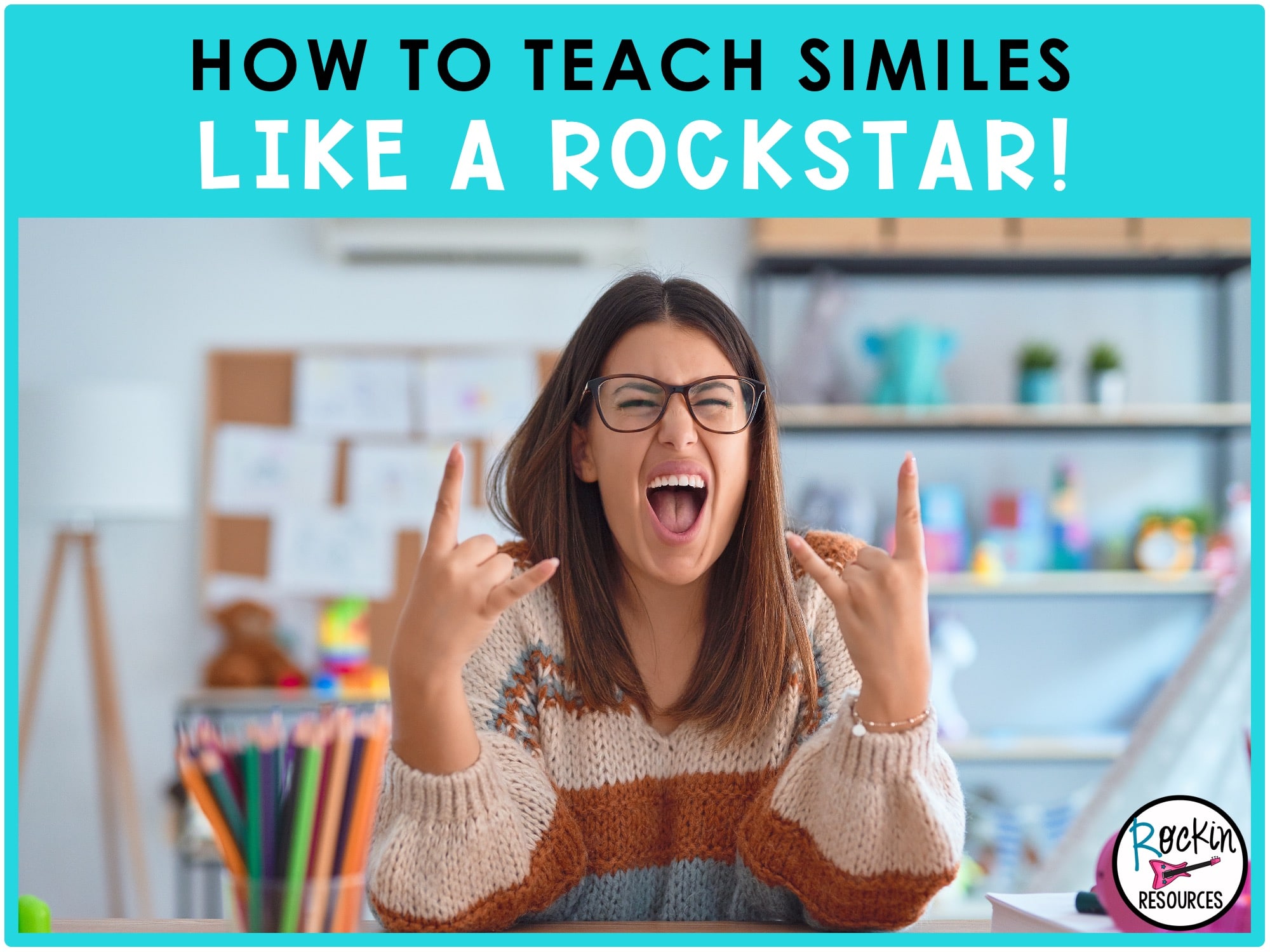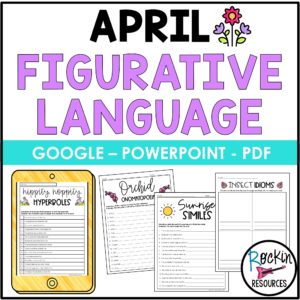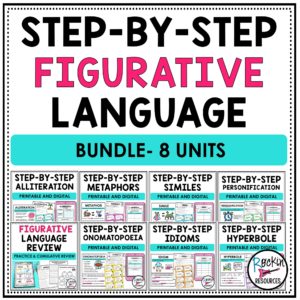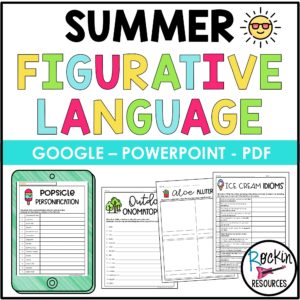Don’t inflate the cow? What??? Idioms are just one of many types of figurative language that grab attention and engage readers or listeners. In fact, similes, metaphors, alliteration, personification, hyperbole, and onomatopoeia are also fun ways to make literature pop!
So what does that idiom mean? In early Northwest China, townspeople inflated cowhides for use as floatation devices or rafts. It was a difficult process that required several people to accomplish, so if one person took credit for inflating the cowhide by himself, villagers knew he was fibbing and inflating his achievements. So, in Mandarin, the phrase, ‘Inflate the cow’ came to mean ‘boasting’.
Another fun idiom: Now, if you visited France, someone might accuse you of ‘pedaling in sauerkraut’. This idiom dates back to the early days of the Tour de France, a world-famous cycling race. When cyclists got tired or could no longer ride, a broom wagon (unfortunately covered in sauerkraut advertisements) picked them up. As these riders crossed the finish line, they were mocked for ‘pedaling in sauerkraut’ or going nowhere fast.
Sadly, I can remember studying these concepts without any fun activities, which made for some very dry and lackluster learning. I think the two examples that stuck with me the most were similes and onomatopoeia—similes because of their use of ‘like’ and ‘as’ and onomatopoeia because it was such a fun word to say.
How do you make studying figurative language fun?
As a teacher, however, I wanted so much more for my students. So, I took a much different approach, using mentor texts, games, collaborative activities, lyrics, advertisements, movies, and just plain FUN. (See below for some bonus ideas!) Just like when you first read about inflating the cow, quoting one of those crazy international idioms always caught my students off guard. The looks on their faces were priceless! (Who says teachers can’t have fun?:)) However, getting student ‘buy in’ about the relevance of studying figurative language was a whole different matter. But fear not, all it took was for one student to ask that age-old question, ‘When will I ever use this in real life?’ and I’d excitedly belt out in that Saturday Night Live piano lady opera voice, “Baby, you’re a firework. Come on, let your colors burst! Make ’em go, “Oh, oh, oh”. You’re gonna leave ’em all in awe, awe, awe!” Completely taken aback, the student would inevitably ask, “That’s figurative language?” Oh dear student, it is!
In fact, though figurative language is everywhere, most students don’t even realize it. Students sing figurative language while listening from their earbuds. While watching television, students hear familiar figurative language in commercials such as ‘like a good neighbor State Farm is there’. Even while fumbling to grab a little buttered popcorn at the movies, students catch Katniss of The Hunger Games using hyperbole and simile, “Those guys are looking at you like you’re a meal.” If you’re lucky, after lunch, if a student runs to the front of your class saying she’s about to ‘toss her cookies’, this, too, can be used as a teachable moment! Okay—maybe that’s a bit much.
So what exactly is figurative language?
Figurative language can be defined as words or phrases used to create imagery or to evoke sensory effects with the purpose of helping readers move beyond literal meaning. Too fancy schmancy? In a nutshell, figurative language helps convey deeper meaning than what the words, at face value, say themselves. Authors use figurative language to bring clarity to abstract concepts and ideas by helping readers create mental pictures, make comparisons, and feel emotion. Also referred to as figures of speech or literary devices, figurative language can be found in stories, poems, articles, and more. Let’s look at some examples:
Simile: It is comparing two unlike things using like or as to show a common quality between them. Ex. The girl’s dress was as colorful as a rainbow.
Metaphor: It is comparing two unlike things without using like or as. Ex. The cup of coffee was a jump start to my day.
Alliteration: It is two or more words with the same beginning sound in the same sentence. Ex. Donovan devoured a dozen donunts.
Personification: It is describing a non-human object, nature, or an animal as having human characteristics. Ex. My alarm clock insisted, “Hurry up, hurry up!”
Idiom: It is an expression that has a different meaning than the literal meaning. Ex. It is raining cats and dogs!
Onomatopoeia: It imitates the natural sounds something makes. Ex. swish, bang, vrrrooom, splat
Hyperbole: It is using extreme exaggeration to make a point or add humor. Ex. I am so tired I could sleep a million years!
Why teach figurative language?
Well, for starters, as we’ve already said, figurative language is all around us. Thus, in order to help students successfully function in daily conversations, work, and life, they must be able to express themselves in creative, impactful, and persuasive ways. Further, we want our students to become critical thinkers. It’s not enough for them to just read, recall, and regurgitate simple details. Students need to make connections, draw conclusions, and use text evidence to infer. While reading or listening, we want students to scrutinize, evaluate, and consider questions like: What is the author’s purpose? How does the author’s craft influence the way readers are thinking? What tone or mood is the author establishing? What message is the author trying to send?
In addition, grasping the nuances of figurative language helps students become ROCKSTAR WRITERS®. Using examples from mentor texts, student writing can be transformed from ordinary to extraordinary as they begin to use words that conjure rich imagery, emotion, and perspective. That is why I include figurative language in my NARRATIVE WRITING UNITS. It is perfect for teaching WORD CHOICE!
What about ELL students?
Teaching figurative language literacy can be especially challenging when it comes to instructing ELL students. Initially, ELL students are trying to master vocabulary and meaning in a very literal sense. Thus, they can become confused and disheartened when words are used in unusual ways. What are some tips to help ELL learners?
- Have ELL students illustrate literal meanings alongside the figurative meanings.
- Create an idiom wall in the classroom featuring various English idioms. Students can add to this wall as they learn new idioms.
- Use real life examples, such as lyrics of songs or words from commercials and movies. (In my figurative language units, I give many examples or each of these!)
Are there figurative language best practices?
As mentioned earlier, my experience learning figurative language was fairly dry and forgettable. In my mind, there wasn’t a valid reason for me to study it other than to pass the class. But, it doesn’t have to be that way. As with many subjects, figurative language best practices include:
- Showcasing anchor charts with exemplars
- Teaching in context
- Modeling with mentor texts
- Promoting critical thinking and analysis
- Practicing with real-life examples
- Differentiating via multiple levels and modes
- Incorporating application and perspective
- Having fun!!!
In our Rockin Resources FIGURATIVE LANGUAGE BUNDLE, you’ll find all of these! When studying similes, metaphors, onomatopoeia, hyperbole, idioms, alliteration, and personification, students will be engaged and excited. You will find high-interest anchor charts for all seven types of figurative language. You’ll also get mentor resources (books, movies, lyrics, commercials), sequenced lesson plans, differentiated practice opportunities, task cards for centers, as well as assessments. The provided Google resources are just icing on the cake.
Grab some bonus ideas!
I would like to leave you with some bonus ideas to use when teaching figurative language!
- Mystery Box – Put one object in a box. Give clues about the object using only similes. Time groups to see who can guess the correct answer the fastest.
- Win, Lose, or Draw – Using a list of food idioms like couch potato, cut the cheese, eat humble pie, or a baker’s dozen, divide students into two teams. Each player selects a food idiom from the list and sketches it. Teammates try to guess the idiom.
- Simulate the Sound – Gather a bunch of random objects: keyboard, finger bell, lunch bag, basketball, etc. Have students close their eyes. Interact w/the object so it makes noise. Have students come up with three words—nonsense or other—to simulate the sound.
- Alliteration Contest – Collect a bunch of tongue twisters. Project on the board. Recite as a class. Then, challenge students to say them as fast as they can individually. Record times and award the winner with an alliteration award!
- Scavenger Hunt – Create a three-columned paper with these headings: example, type of literary device, meaning. Then, have students take the sheet home to hunt for at least 5 examples from commercials, music, news headlines, or TV programs.
- Another Scavenger Hunt- Use a graphic organizer from our reading response notebooks and look through books. Find one example of each kind of figurative language.
Using the Rockin Resources Figurative Language Bundle will surely make reading and writing come alive. And that’s not mincing words!
Keep Rockin’,
SEE SIMILAR BLOGS:
DISCOVER RELATED RESOURCES:
-
Figurative Language Bundle
Original price was: $38.00.$18.99Current price is: $18.99. -
Monthly Themed Figurative Language Practice – Figurative Language – Holiday Figurative Language
Original price was: $19.80.$10.00Current price is: $10.00.
SHARE THIS POST ON PINTEREST:

























